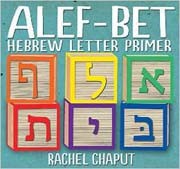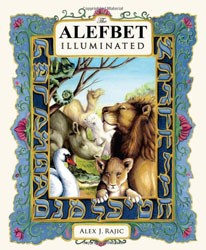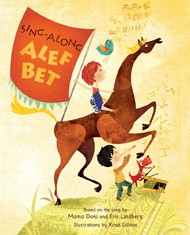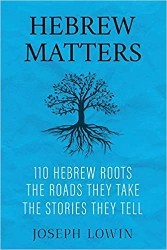Written for very young children and the adults in their lives, The Hebrew Alphabet uses brightly colored drawings to present Hebrew letters in Hebrew, in English, and in Hebrew transliteration. This is followed by a sweet rhyme. For example, dalet is shown in Hebrew, there is a drawing of a teddy bear which it is given the Hebrew name “dubi”, and the accompanying rhyme is: “Tiny little Danny wants his pet in his bed; Mommy gets him a DUBI to sleep with him instead.”
The words chosen to accompany the Hebrew letters such as dog, horse, or cake are all within the realm of a young child’s vocabulary and the repetitive structure of each page makes it easier for little ones to learn what is being taught.
Additionally, there is a lot of useful information included for adults. An authors’ note points out that boys and girls who learn a second language “…have also been found to be better at learning, planning and self-control.” Additional material teaches about the revival of the Hebrew language in the 1800s by Eliezer Ben-Yehuda in the hope that reading and speaking Hebrew will give a lifelong connection to Israel and the Bible. Some phonetic pronunciation information about Hebrew is also included.
This is the first book in a series and the authors promise that there will be more in the Taste of Hebrew for Kids Series to come.
Recommended for children 3 – 6 years of age.





